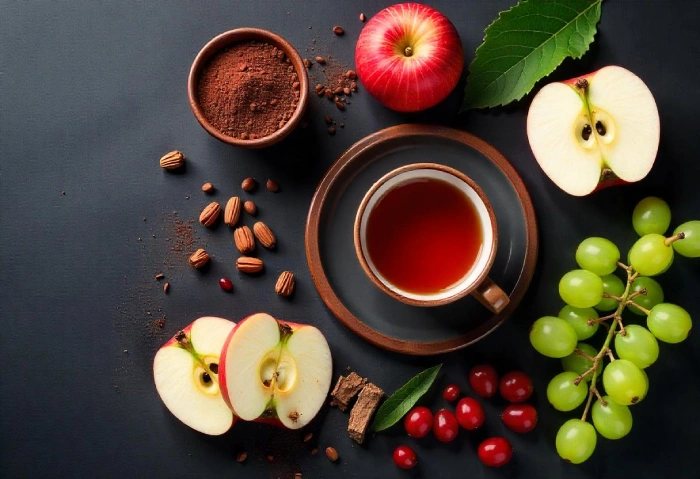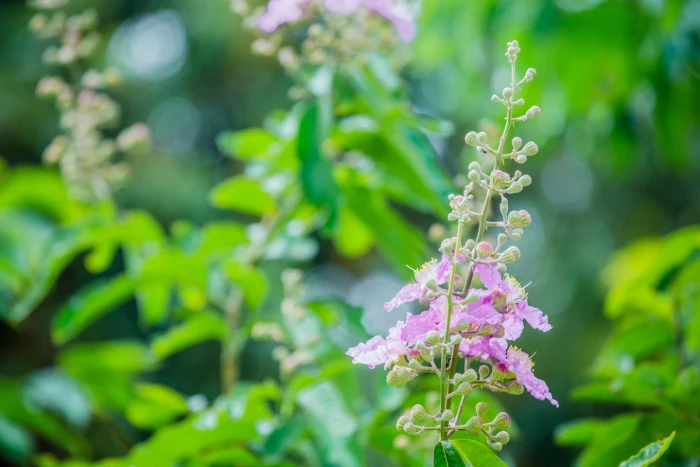Hey there, health enthusiasts! Ready to dive into the world of a tongue-twister supplement that’s about to become your new best friend? Buckle up, because we’re about to explore the amazing world of Oligomeric Proanthocyanidins (OPCs). Don’t worry, I promise it’s not as complicated as it sounds!
What in the World are Oligomeric Proanthocyanidins?
Okay, let’s break this down. Oligomeric Proanthocyanidins, or OPCs for short (thank goodness for acronyms, right?), are these super cool compounds found in plants. Think of them as nature’s little superheroes, swooping in to save the day for your health. But what exactly are they?
OPCs are a type of polyphenol, which is a fancy way of saying they’re plant-based compounds that pack a serious punch when it comes to health benefits. They’re like the cool kids of the antioxidant world, hanging out in grape seeds, pine bark, and other plant-based foods.
Now, I know what you’re thinking. “Great, another health supplement. What makes this one so special?” Well, my friend, strap in because we’re about to take a wild ride through the amazing world of OPCs!
The Superpowers of Oligomeric Proanthocyanidins
Alright, let’s talk about why OPCs are the superhero your body never knew it needed. These little powerhouses are like the Avengers of the supplement world, each with their own unique abilities.
1. Antioxidant Extraordinaire
First up, OPCs are antioxidant superheroes. They’re like tiny bodyguards, protecting your cells from those nasty free radicals that cause oxidative stress. Imagine them as bouncers at the club of your body, kicking out the troublemakers before they can cause any damage.
2. Inflammation Fighter
Next, OPCs are inflammation’s worst nightmare. They’re like the mediators in your body, calming down the inflammatory response and helping to keep everything in check. It’s like they’re giving your immune system a chill pill!
3. Heart Health Hero
When it comes to heart health, OPCs are your ticker’s best friend. They help improve blood flow, support healthy blood pressure, and even give your blood vessels a little TLC. It’s like they’re giving your heart a spa day, every day!
4. Skin’s Secret Weapon
Ladies and gents, listen up! OPCs might just be the fountain of youth we’ve all been searching for. They help protect your skin from UV damage, boost collagen production, and even improve skin elasticity. Who needs expensive creams when you’ve got nature’s own anti-aging formula?
5. Brain Booster
Last but not least, OPCs are like a personal trainer for your brain. They help improve cognitive function, boost memory, and may even play a role in preventing age-related cognitive decline. It’s like they’re giving your neurons a pep talk!
The Science Behind Oligomeric Proanthocyanidins
Now, I know what some of you skeptics out there are thinking. “Sounds too good to be true!” Well, let me hit you with some cold, hard facts. The benefits of OPCs aren’t just some wishy-washy claims – they’re backed by science!
Numerous studies have shown the potential benefits of OPCs. For example, a study published in the Journal of Medicinal Food found that OPCs from grape seed extract had significant antioxidant and anti-inflammatory effects. Another study in the European Journal of Clinical Nutrition showed that OPCs could help improve cardiovascular health by reducing blood pressure and cholesterol levels.
But wait, there’s more! Research published in Phytotherapy Research suggested that OPCs could help improve symptoms of ADHD in children. And if that wasn’t enough, a study in Nutrition and Cancer found that OPCs might have potential anti-cancer properties. Talk about a jack of all trades!
Where Can You Find Oligomeric Proanthocyanidins?
Now that we’ve got you all excited about OPCs, you’re probably wondering where you can get your hands on these miracle workers. Well, good news! OPCs are found in a variety of foods and supplements.
Food Sources of OPCs:

1. Grape seeds and skins (time to indulge in that glass of red wine, folks!)
2. Apples (an apple a day keeps the doctor away, indeed!)
3. Berries (blueberries, cranberries, strawberries – take your pick!)
4. Cocoa (chocolate lovers, rejoice!)
5. Green tea (perfect excuse for a tea party)
6. Pine bark (though I wouldn’t recommend chewing on tree bark)
Oligomeric Proanthocyanidins Supplements:
If you’re not getting enough OPCs from your diet (or if you just can’t stomach the idea of chewing on pine bark), don’t worry! OPC supplements are widely available. The most common forms are grape seed extract and pine bark extract supplements.
How to Choose the Best OPC Supplement
Choosing the right OPC supplement can feel like trying to pick the perfect avocado at the grocery store – tricky, but oh so worth it when you get it right. Here are some tips to help you choose the best OPC supplement:
1. Look for standardized extracts: This ensures you’re getting a consistent amount of OPCs in each dose.
2. Check the OPC content: Higher percentages of OPCs are generally better.
3. Consider the source: Grape seed extract and pine bark extract are the most common and well-studied sources.
4. Read the labels: Avoid supplements with unnecessary fillers or additives.
5. Choose reputable brands: Look for companies that have third-party testing and good manufacturing practices.
The Oligomeric Proanthocyanidins Experience: What to Expect
So, you’ve decided to jump on the OPC bandwagon. Awesome! But what can you expect? Well, unlike that time you tried that weird fad diet your cousin swore by, the effects of OPCs are usually subtle and build up over time.
You might notice improvements in your skin’s appearance, feel a bit more energetic, or find that your mind seems a bit sharper. Some people report better circulation (goodbye, cold feet!) and improved overall well-being. Just remember, everyone’s body is different, so your mileage may vary.
Oligomeric Proanthocyanidins: Who Should Take Them?
Now, you might be wondering if OPCs are right for you. Well, the great thing about OPCs is that they can benefit almost everyone! Whether you’re a health nut looking to optimize your well-being, or just someone who wants to give their body a little extra love, OPCs could be a great addition to your routine.
They’re especially beneficial for:
1. People concerned about aging (aka everyone over 25)
2. Those looking to support heart health
3. Individuals wanting to boost their cognitive function
4. Anyone dealing with inflammation issues
5. People looking for natural antioxidant support
However, as with any supplement, it’s always a good idea to chat with your healthcare provider before starting, especially if you have any pre-existing conditions or are taking medications.
The Dark Side: Potential Side Effects of Oligomeric Proanthocyanidins

Now, I know we’ve been singing the praises of OPCs, but let’s keep it real for a moment. While OPCs are generally considered safe, they’re not without potential side effects. It’s like that friend who’s amazing 99% of the time but occasionally does something annoying – you still love them, but you need to be aware of their quirks.
Potential side effects of OPCs may include:
1. Headaches
2. Dizziness
3. Nausea
4. Stomach upset
These side effects are generally mild and often go away on their own. However, if you experience any persistent or severe side effects, it’s important to stop taking the supplement and consult your healthcare provider.
Also, OPCs may interact with certain medications, particularly blood thinners and chemotherapy drugs. This is why it’s crucial to talk to your doctor before starting any new supplement regimen.
How to Use Oligomeric Proanthocyanidins: Dosage and Timing
Alright, so you’re sold on OPCs and ready to give them a try. But how much should you take? When should you take them? Don’t worry, I’ve got you covered!
The optimal dosage of OPCs can vary depending on the specific product and your individual needs. However, most studies have used doses ranging from 100 to 300 mg per day. It’s usually best to start with a lower dose and gradually increase it if needed.
As for timing, OPCs are typically taken once or twice daily with meals. Some people prefer taking them in the morning for an antioxidant boost to start their day, while others like taking them in the evening to support overnight repair processes. Experiment to see what works best for you!
Remember, more isn’t always better. Stick to the recommended dosage on the product label or as advised by your healthcare provider.
Oligomeric Proanthocyanidins and ADHD: A Surprising Connection
Here’s something that might surprise you – OPCs might be beneficial for people with ADHD. Yes, you read that right! Some studies have shown that OPCs could help improve attention and reduce hyperactivity in children with ADHD.
A study published in the European Child & Adolescent Psychiatry journal found that children with ADHD who took pine bark extract (a rich source of OPCs) showed significant improvement in hyperactivity, attention, and visual-motoric coordination.
Now, this doesn’t mean OPCs are a magic cure for ADHD. But it’s certainly an interesting area of research that could offer hope for those looking for natural ways to manage ADHD symptoms.
Oligomeric Proanthocyanidins and Cancer: What We Know So Far

Another exciting area of research is the potential role of OPCs in cancer prevention and treatment. Now, before you get too excited, let me be clear: OPCs are not a cure for cancer. However, some studies suggest they might have anti-cancer properties.
Research has shown that OPCs may help inhibit the growth of cancer cells and even induce apoptosis (cell death) in certain types of cancer cells. They’ve shown particular promise in studies on breast, prostate, and colon cancer cells.
Again, this is still an area of ongoing research, and much more study is needed before we can make any definitive claims. But it’s certainly an exciting development in the world of OPCs!
The Future of Oligomeric Proanthocyanidins: What’s Next?
As we wrap up our journey through the world of OPCs, you might be wondering what the future holds for these powerful compounds. Well, let me tell you, the future looks bright!
Researchers are continuing to explore new potential benefits of OPCs. Some areas of ongoing research include:
1. OPCs and metabolic health
2. The role of OPCs in gut health
3. OPCs and athletic performance
4. The potential of OPCs in managing autoimmune conditions
Who knows? In a few years, we might be talking about even more amazing benefits of these super-compounds!
Conclusion: Are Oligomeric Proanthocyanidins Worth the Hype?
So, after this deep dive into the world of Oligomeric Proanthocyanidins, what’s the verdict? Are they worth all the buzz?
In my humble opinion, absolutely! OPCs offer a wide range of potential health benefits, from supporting heart health to boosting brain function and everything in between. They’re backed by scientific research, generally safe for most people, and can be found in both delicious foods and convenient supplements.
Of course, OPCs aren’t a magic pill that will solve all your health problems overnight. They’re best used as part of a healthy lifestyle that includes a balanced diet, regular exercise, and good sleep habits.
Remember, everyone’s body is different, so what works wonders for your best friend might not have the same effect on you. It’s always a good idea to talk to your healthcare provider before starting any new supplement regimen.
But if you’re looking for a natural way to support your overall health and well-being, OPCs might just be the superhero supplement you’ve been searching for. So why not give them a try? Your body (and maybe even your taste buds, if you opt for the chocolate and red wine sources) will thank you!
And there you have it, folks! Your comprehensive guide to the wonderful world of Oligomeric Proanthocyanidins. Now go forth and impress your friends with your newfound knowledge of this tongue-twister of a supplement. Just maybe practice pronouncing it a few times first!



